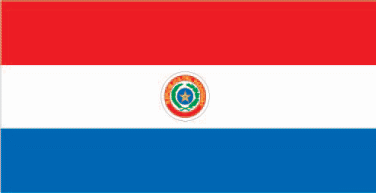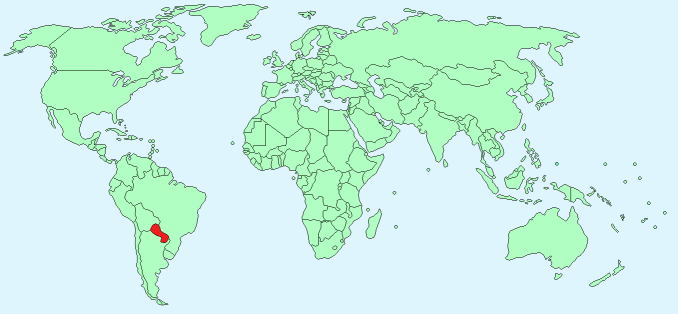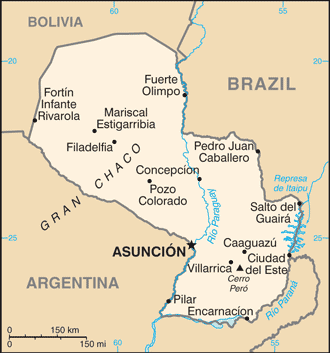Paraguay


Continent – South America
Region – Central
Size – 406,752 km²
Geography – Grassy plains with some hills
Language – Spanish, Guarani
Religion – Roman Catholic 89.6%, Protestant 6.2%, other 4.2%
Monetary Unit – Paraguayan guaraní
Natural Resources – hydropower, timber, iron ore, manganese, limestone
Agriculture – cotton, sugarcane, soybeans, corn, wheat, tobacco, cassava (manioc, tapioca), fruits, vegetables; beef, pork, eggs, milk; timber
Industry – sugar, cement, textiles, beverages, wood products, steel, base metals, electric power

Neighbouring Countries – Bolivia, Brazil, Argentina
Population – 6,783,272 (2015)
Population Growth Rate – 1.16%
Average Life Expectancy – 76.9
Capital City – Asuncion (population 680,250)
Highest Mountain – Cerro Pero (842 m)
Longest River – Rio Paraguay (2,621 m in Brazil, Bolivia, Paraguay and Argentina)
Climate – Warm winters 13°C to 21°C and hot summers 25°C to 33°C
Yearly Rainfall – 120 cm approx, mostly April to October
Plant Life – urunday, cedron, curupay, lapacho, quebracho, ceiba, grasses, ferns, palms
Animal Life – jaguar, tapir, wild boar, capybara, deer, armadillo, anteater, fox, brown wolf, carpincho, crocodile, boa constrictor
Bird Life – ibis, herons, parrots, black ducks, partridges, American ostriches, rheas, and parakeets
Harvard Reference for this page:
Heather Y Wheeler. (2015). Paraguay. Available: https://www.naturalhistoryonthenet.com/Facts_Figures/Country_Facts/paraguay.htm. Last accessed Tuesday, July 19, 2016
Facts and Figures Pages
